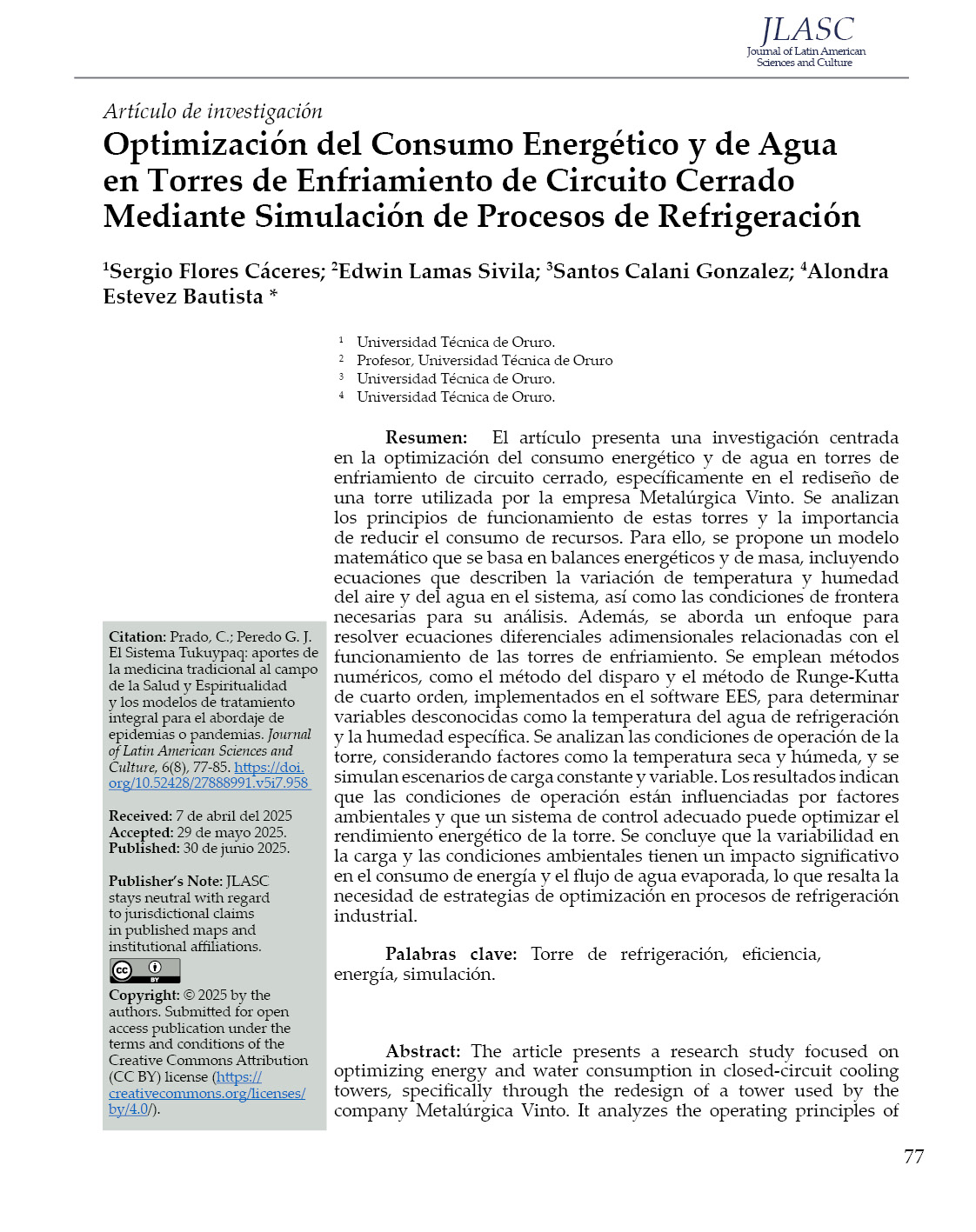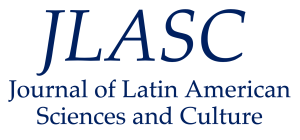Optimización del Consumo Energético y de Agua en Torres de Enfriamiento de Circuito Cerrado Mediante Simulación de Procesos de Refrigeración
DOI:
https://doi.org/10.52428/27888991.v7i10.1274关键词:
Torre de refrigeración, eficiencia, energía, simulación.摘要
The article presents research focused on the optimization of energy and water consumption in towers closed circuit cooling, specifically in the redesign of a tower used by the company Vinto Metallurgical. The operating principles of these towers and the importance of reducing resource consumption. For this, a mathematical model is proposed that is based on energy balances and of mass, including equations that describe the variation in temperature and humidity of air and water in the system, as well as the boundary conditions necessary for its analysis. Furthermore, an approach is addressed to solve dimensionless differential equations related to the operation of towers cooling. Numerical methods are used, such as the shot method and the Runge-Kutta method of fourth order, implemented in the EES software, to determine unknown variables such as temperature of cooling water and specific humidity. The operating conditions of the tower are analyzed, considering factors such as dry and humid temperature, and constant load scenarios and variable. The results indicate that operating conditions are influenced by environmental factors. and that an adequate control system can optimize the energy performance of the tower. It is concluded that Variability in load and environmental conditions have a significant impact on fuel consumption. energy and the flow of evaporated water, which highlights the need for optimization strategies in processes industrial refrigeration.Downloads
参考
Al-Waked, R., & Behnia, M. (2006). CFD simulation of wet cooling towers. Applied Thermal Engineering, 26(4), 382-395. https://doi.org/10.1016/j.applthermaleng.2005.06.018 DOI: https://doi.org/10.1016/j.applthermaleng.2005.06.018
Lemouari, M., Boumaza, M., & Kaabi, A. (2009). Experimental analysis of heat and mass transfer phenomena in a direct contact evaporative cooling tower. Energy Conversion and Management, 50(6), https://doi.org/10.1016/j.enconman.2009.02.002 DOI: https://doi.org/10.1016/j.enconman.2009.02.002
Milosavljevic, N., & Heikkilä, P. (2001). A comprehensive approach to cooling tower design. Applied Thermal Engineering, 21(9), 899-915. https://doi.org/10.1016/S1359-4311(00)00078-8 DOI: https://doi.org/10.1016/S1359-4311(00)00078-8
Sarker, M. M. A., Kim, E., Moon, C. G., & Yoon, J. I. (2008). Performance characteristics of the hybrid closed circuit cooling tower. Energy and Buildings, 40(8), 1529-1535. enbuild.2008.02.010 https://doi.org/10.1088/1475-7516/2008/02/010 DOI: https://doi.org/10.1016/j.enbuild.2008.02.010

Downloads
已出版
How to Cite
期
栏目
License
Copyright (c) 2025 Edwin Lamas

This work is licensed under a Creative Commons Attribution 4.0 International License.
Los autores/as que publiquen en esta revista aceptan las siguientes condiciones: Los autores/as conservan los derechos de autor y ceden a la revista el derecho de la primera publicación, con el trabajo registrado con la licencia de atribución de Creative Commons 4.0, que permite a terceros utilizar lo publicado siempre que mencionen la autoría del trabajo y a la primera publicación en esta revista. Los autores/as pueden realizar otros acuerdos contractuales independientes y adicionales para la distribución no exclusiva de la versión del artículo publicado en esta revista (p. ej., incluirlo en un repositorio institucional o publicarlo en un libro) siempre que indiquen claramente que el trabajo se publicó por primera vez en esta revista. Se permite y recomienda a los autores/as a compartir su trabajo en línea (por ejemplo: en repositorios institucionales o páginas web personales) antes y durante el proceso de envío del manuscrito, ya que puede conducir a intercambios productivos, a una mayor y más rápida citación del trabajo publicado.








